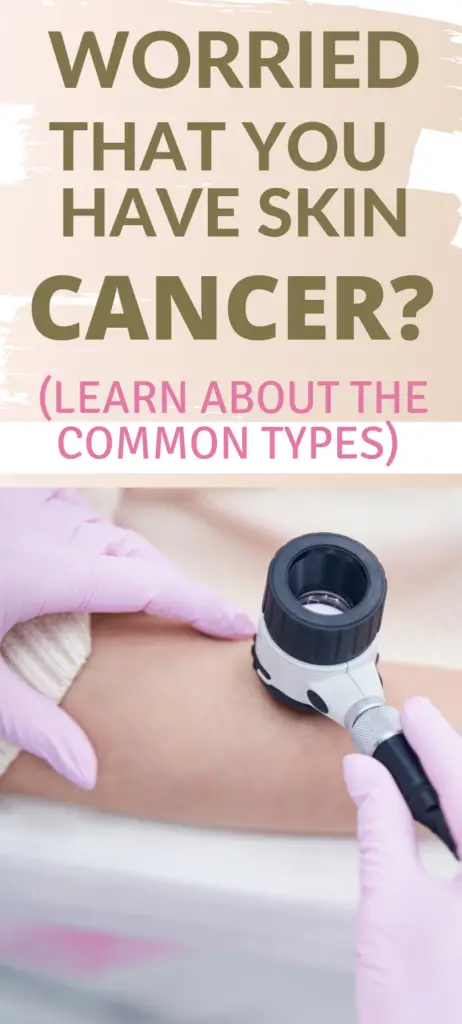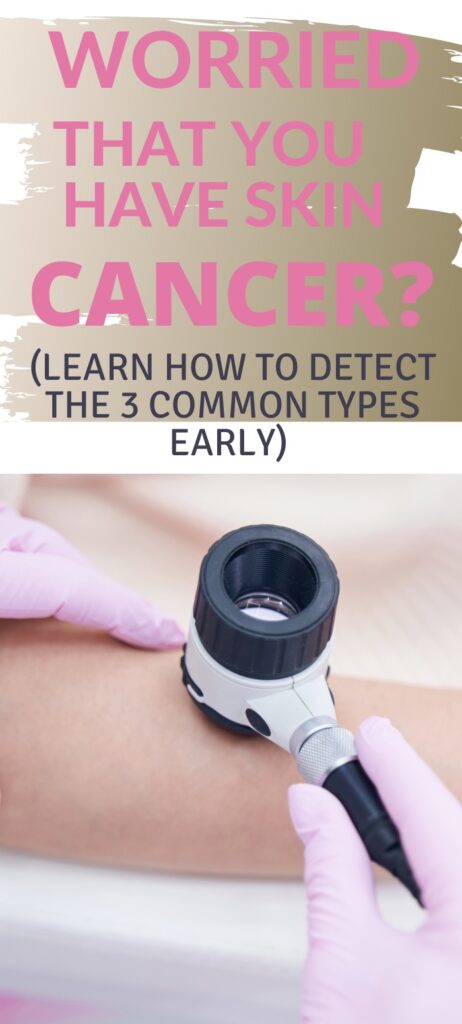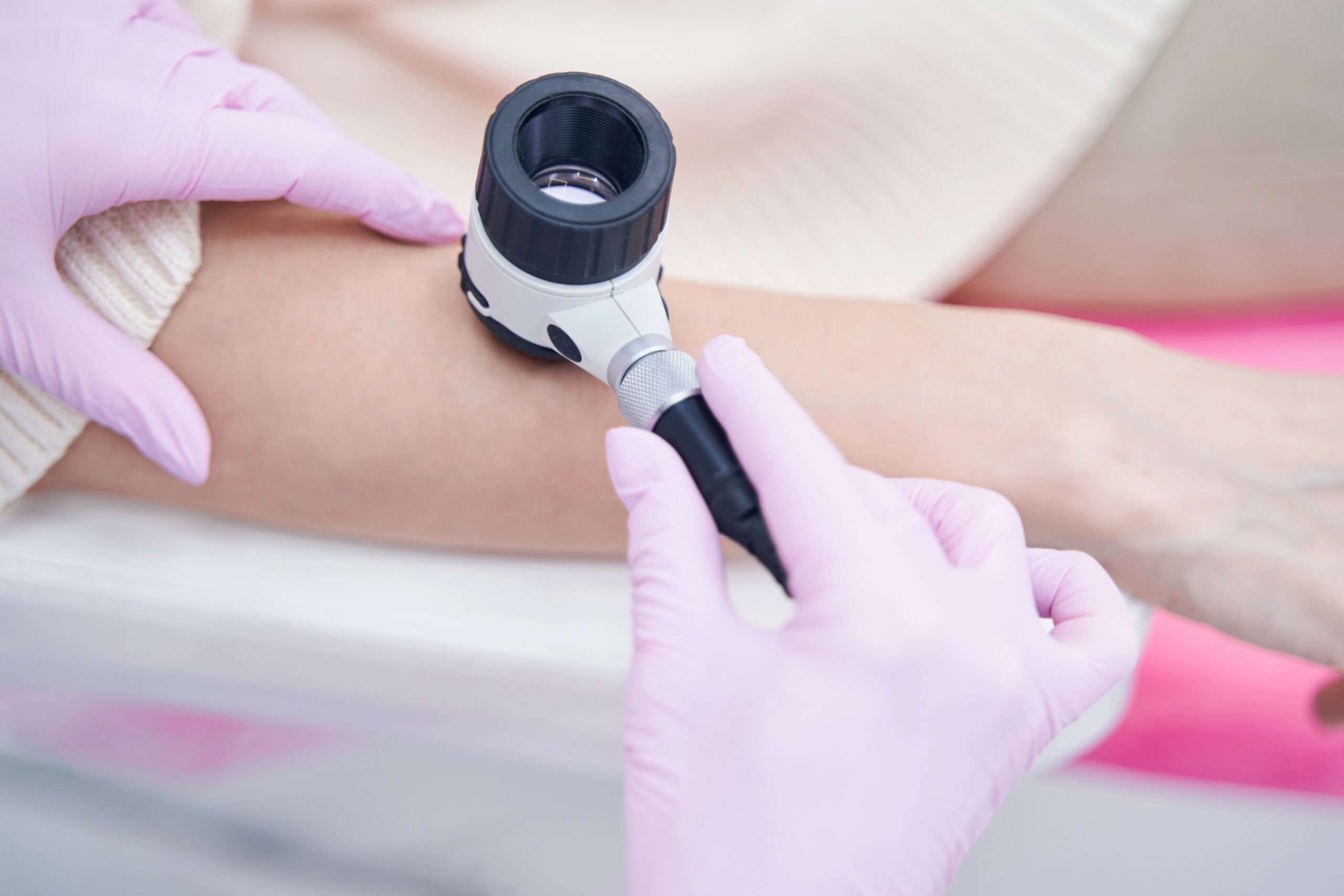Do you have a personal or family history of skin cancer? Maybe you had blistering sunburns as a kid, or you have used tanning beds. If so, you are at a higher risk of developing skin cancer. This post is not meant to scare you. I want to educate you in the hopes that you may catch something early. I am covering the three most common types of skin cancer: basal cell carcinoma, squamous cell carcinoma, and melanoma, and how you can detect these skin cancers early.
Basal cell carcinoma
Basal cell carcinomas are the most common type of skin cancer we see and the most common type of cancer period. They more commonly develop due to cumulative years of sun exposure or tanning bed use. Basal cells generally like to show up as pink or red spots that are not healing. Occasionally they can be skin-colored or even darkly colored which is known as a pigmented basal cell. They are very slow to grow but after a certain period, they become symptomatic such as tender or begin to bleed easily. You can develop a basal cell anywhere on the body but more common areas include the head and neck. While the risk of metastasis with these is extremely low, if left alone they will continue to grow and can ulcerate and go down to the bone. The longer you wait to have these checked, the larger the spot, the larger the surgery, and the larger the scar.
Squamous cell carcinoma
Squamous cell carcinomas are the second most common type of skin cancer we see and carry a higher risk of metastasis than basal cells. They can appear in many different forms and can sometimes grow slowly while others appear to pop up overnight. Some will look similar to basal cells, while other times they can have a wart-like or verrucous appearance. The latter tends to be tender if you press on it. If you are prone to precancerous lesions known as actinic keratoses then you are at a higher risk of developing squamous cell carcinoma as actinic keratoses can be a precursor. Actinic keratoses appear as white, pink, or red rough gritty spots normally found on sun-exposed skin. They tend to come and go in the same spot and are normally asymptomatic. We notice actinic keratoses are turning into squamous cell carcinoma when they start to become tender.
Melanoma
Melanomas are much less common than basal cell and squamous cell carcinoma but can be more concerning. While melanoma can be pink or red, it more commonly appears as a new dark spot or a mole that is suddenly changing. Many different factors contribute to the risk of melanoma. Genetics can play a role especially if you have a first-degree relative with a history of melanoma. First-degree relatives include parents, siblings, and children. History of sun exposure and tanning bed use are also contributors to your risk.
Dermatology and other medical providers will look for the ABCDEs of melanoma when assessing a spot of concern. A stands for asymmetry. B stands for border irregularity or a mole with a fuzzy border. C stands for color differentiation, so a mole that has multiple shades of brown, pink, red, black, and blue in it would be a concern. D is a diameter greater than 6 mm or the end of a pencil eraser. E is any mole that is evolving or changing. I also like to throw in U for the ugly duckling, the mole that looks different than the rest. I generally get more concerned and want to biopsy when a combination of a few of these factors is present.
If you have a spot that sounds similar to any of the above and it isn’t going away then don’t wait. When in doubt, go get it checked out by a dermatology medical provider! Skin exams are the main reason why we can detect skin cancer early. A lot of the sun damage may already be done and irreversible, but you can still use sun-protective clothing and sunscreen to protect yourself going forward. Check out my favorite sunscreen here!
*Disclaimer: Opinions expressed are solely my own and do not express the views or opinions of my employer. Information on this website is for education and entertainment purposes only. Content is my opinion. It is not substituted for your own doctor’s medical care or advice. One should not make any health or medical-related decisions based in whole or in part on any content on this site. Content is not intended to replace the services of a licensed, trained health professional. Content may not apply to you as an individual. Although I will update my website with current information, this website is not a definitive guide to dermatology.



View comments
+ Leave a comment